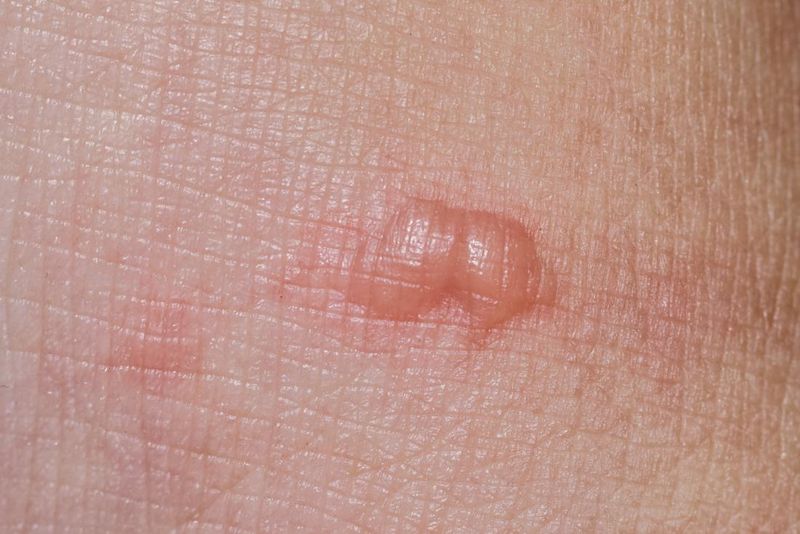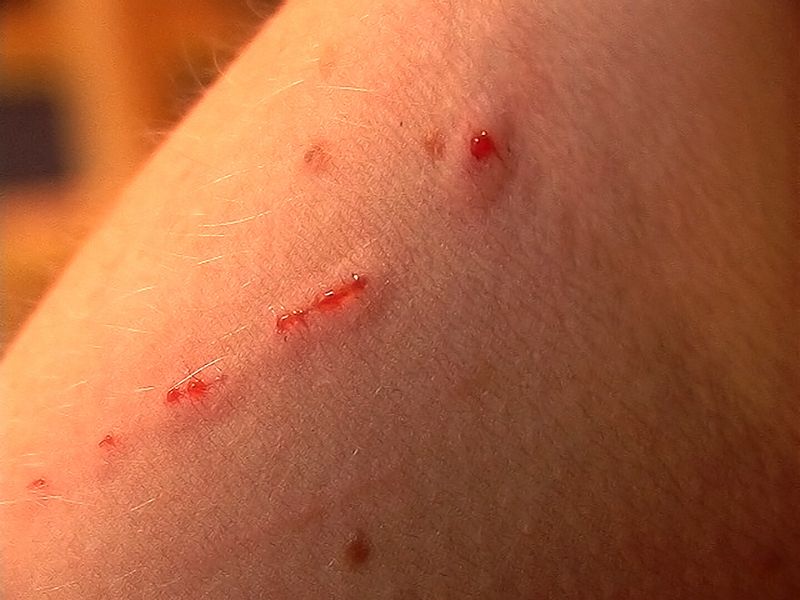📖 Table of Content:
Cat Scratch Fever might sound like a quirky term, but it refers to a real and sometimes serious bacterial infection caused by the Bartonella henselae bacterium. While many people associate cat-related injuries with simple scratches and minor annoyances, the consequences of an infection can be more significant. Understanding what Cat Scratch Fever is and how it operates is crucial for both cat owners and those who interact regularly with felines.
Although cats are beloved companions, they can unintentionally become carriers of bacteria that may lead to human illness. People of all ages can contract Cat Scratch Fever, but young children and those with weakened immune systems are at greater risk. Awareness of the infection process, early symptoms, and proper care strategies can dramatically reduce your chances of developing more serious health issues linked to this disease.
In this guide, we’ll walk through ten essential things you should know about Cat Scratch Fever. These points will give you a deeper appreciation of how this illness functions, what warning signs to look for, and what preventive measures you can take to stay safe. Whether you’re a long-time cat parent or simply someone who enjoys a quick pet at a friend’s house, this knowledge is a must.
1. What Cat Scratch Fever Is
The term “Cat Scratch Fever” refers specifically to an infection caused by the Bartonella henselae bacterium. Emerging mainly through close contact with cats, particularly kittens, this illness may range from mild to severe depending on the person’s immune response. Individuals typically experience localized infections but can sometimes develop systemic symptoms that affect other parts of the body. It’s important to note that the bacteria thrive in environments associated with fleas, which is how cats often become infected. Knowing the underlying cause gives important context for prevention strategies. This disease is not to be confused with viral infections or allergic reactions caused by cat exposure. Proper understanding starts with recognizing it as a bacterial issue originating from our feline friends.
2. How It’s Transmitted
Transmission of Cat Scratch Fever happens in several subtle ways that people often underestimate. After a cat’s scratch, bite, or lick touches broken skin, bacteria can easily slip into the human bloodstream. Even gentle play that results in a small scratch could be enough to trigger an infection if the cat is carrying Bartonella. In addition, flea feces on a cat’s claws or fur can also carry the bacterium and get introduced during grooming or contact. Children and pet owners often miss these minor interactions, not realizing they are potential transmission points. It is not necessary for the wound to bleed heavily for transmission to occur; any break in the skin may be sufficient. Prevention starts with cautious handling and mindful attention to wounds, no matter how small.
3. Common Symptoms
Typical symptoms of Cat Scratch Fever can sometimes mimic other common illnesses, making diagnosis tricky without considering context. Early on, individuals may notice a small, raised bump or blister at the injury site that develops within a few days after contact. As the infection progresses, swollen lymph nodes, particularly around the head, neck, and upper limbs, often become prominent and tender. A low-grade fever, persistent fatigue, and general malaise frequently accompany the swelling. Occasionally, people report headaches and loss of appetite alongside these more recognized symptoms. Because these signs often overlap with viral infections like the flu, connecting them to a recent cat interaction is crucial. Timely recognition ensures appropriate care and a faster recovery.
4. Cats Often Show No Symptoms
Infected cats usually remain completely asymptomatic, which makes preventing Cat Scratch Fever trickier than it seems. Even though they carry the Bartonella bacterium, they often show no signs of illness themselves and behave as healthy animals. Cat owners may assume that a seemingly healthy pet poses no risk, leading to complacency about scratches and bites. Testing for Bartonella is possible but not routinely done unless recurrent issues occur. Consequently, it’s hard to know whether your cat could be silently harboring the infection. This hidden carriage in cats is why human vigilance is so essential. Regular flea control and gentle handling habits can mitigate much of the risk.
5. Young Cats Pose a Higher Risk
When it comes to the age of the cat, younger ones tend to pose a greater risk for spreading Cat Scratch Fever. Kittens are far more likely to have Bartonella infections compared to older cats, primarily because they are still developing immunity and often have heavier flea infestations. Additionally, young cats are more playful and rambunctious, which increases the likelihood of bites and scratches during human interaction. Their little claws, though tiny, can harbor large amounts of bacteria if proper grooming and health checks aren’t maintained. Petting and playing with kittens remains a joyful experience but one that should be approached carefully. A bit of caution can go a long way toward protecting your health while still enjoying their companionship. Veterinary checkups during the kitten’s early months are crucial in minimizing bacterial spread.
6. Diagnosis Can Be Tricky
Diagnosing Cat Scratch Fever doesn’t always involve a straightforward process, making awareness of the symptoms even more critical. Doctors typically start by asking about recent cat exposure combined with physical symptoms such as lymph node swelling. Blood tests are sometimes employed to detect antibodies or DNA from the Bartonella bacterium, but they are not always necessary for mild cases. In some circumstances where the lymph node is extremely enlarged or painful, a biopsy may be recommended to rule out other serious conditions. Early diagnosis often relies more on a keen clinical eye than sophisticated tests. This is one reason sharing your pet exposure history with your doctor can be extremely important. Ultimately, early intervention ensures fewer complications and a quicker recovery.
7. Most Cases Are Mild
In the vast majority of cases, Cat Scratch Fever is considered a mild illness that clears up on its own. Many individuals never require antibiotics and recover fully with rest and over-the-counter treatments for discomfort. The body’s immune system is usually able to clear the infection naturally within a few weeks. Nevertheless, home care with warm compresses on swollen lymph nodes and proper wound hygiene speeds the healing process. It’s reassuring to know that hospitalization is rare unless complications arise. People generally experience a complete return to normal health without long-term consequences. Keeping a close eye on symptoms ensures that worsening cases get escalated promptly if needed.
8. Complications Can Happen
Rare but serious complications can develop in certain individuals affected by Cat Scratch Fever, although they are not the norm. People with weakened immune systems, such as transplant recipients or those with HIV/AIDS, face higher risks of experiencing systemic infections. In severe cases, the infection can spread to bones, the brain, the eyes, or the heart valves, leading to potentially life-threatening conditions. Persistent high fevers, seizures, or unexplained weight loss in these individuals demand immediate medical attention. Awareness of these complications reinforces why early symptom monitoring is so vital. Although it might start with something as simple as a scratch, the disease’s potential severity cannot be overlooked. Overall, while uncommon, these risks warrant a careful approach to prevention and treatment.
9. Treatment Options
Treatment strategies for Cat Scratch Fever typically vary depending on the severity of the symptoms and the patient’s health status. Mild cases often resolve on their own with little to no medical intervention beyond pain relief and wound care. However, in cases involving severe symptoms or immune-compromised individuals, antibiotics such as azithromycin or doxycycline are usually prescribed. Doctors may also recommend supportive treatments like anti-inflammatory medications to help with lymph node tenderness. It is important to complete the full course of any prescribed antibiotics to ensure the infection is completely cleared. In addition, warm compresses applied several times a day can help reduce discomfort and swelling. Consultation with healthcare providers ensures that the appropriate treatment path is followed for each unique case.
10. How to Prevent It
Prevention of Cat Scratch Fever centers on thoughtful pet ownership and careful hygiene practices. Reducing flea infestations through regular vet-recommended flea control products significantly lowers the risk of bacterial carriage. People should avoid rough play with cats, especially kittens, and wash any scratches or bites immediately with soap and water. Children should be taught safe ways to interact with cats to minimize injury. Keeping a cat’s claws trimmed and providing scratch posts can help redirect scratching behavior away from humans. Regular veterinary visits not only help ensure your cat’s health but also reduce your family’s exposure risk. By following a few simple habits, cat lovers can continue enjoying their furry friends without fear.










